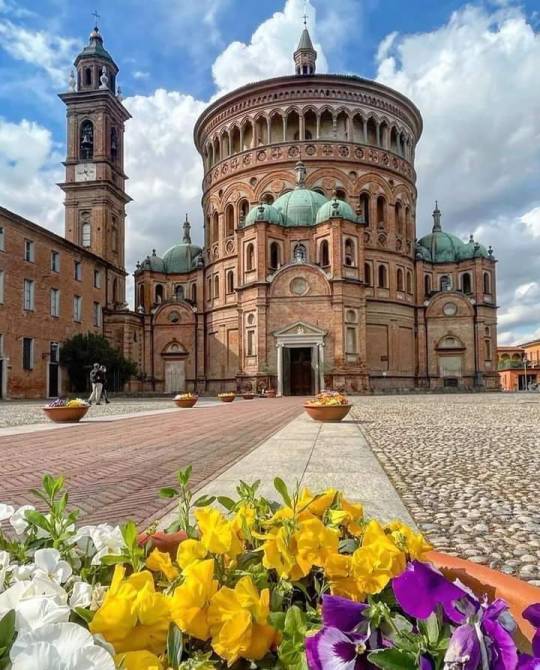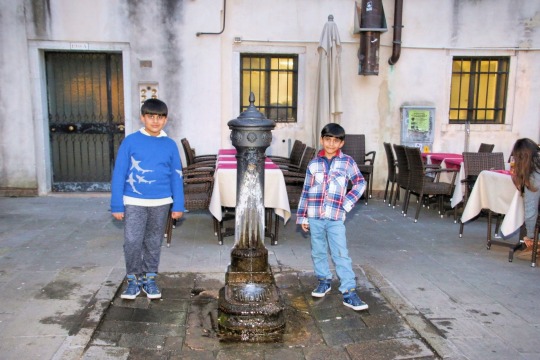#la Croce
Explore tagged Tumblr posts
Text
TERZA PUNTATA DELLA SPALLETTI CAM
#TUTTE LE SUE URLA ERANO LE MIE#segno della croce compreso#oggi con PELLEE PELLEEEEEEEEEEEE ma anche l'evergreen DAVIDEEEEEEEEEEEEEEEEEEEEEEEE#il povero frattesi andra in terapia con gigio finita sta avventura#ma che poi cosa urla che le scelte le fa lui devo ancora capire.........si incazza con giodilo nonno l'ha messo te la eh??!
26 notes
·
View notes
Text

Santa Maria della Croce Sanctuary in Crema, Lombardy, ITALY
#santa maria#della croce#de la cruz#saint mary#of the cross#sanctuary#santuario#crema#crema italia#lombardy#lombardia#italy#italia#europe#europa
72 notes
·
View notes
Text
beautiful week for maxallix enjoyers bc max posted sun pierre croce posted w/ max on mon n la maison posted w/ max today tues myb we'll get a lucas w/ max tom wed? n myb a return of pause dej w/ max on thurs? one can only hope i think there's also passe d but i dont watch tht i dont love him enough to watch football videos where j'ai pas du tout la ref
4 notes
·
View notes
Text

John of the Cross The dark night of the soul
St. John of the Cross was one of the most famous mystics of Christianity. He supported Teresa of Avila's reform efforts in the Carmelite order and repeatedly came into conflict with the church superiors as a result. He passed on his mystical experiences in an extensive lyrical work.
John of the Cross was born in 1542 in the small village of Fontiveros near Ávila in Castile. His father Gonzalo de Yepes came from the Toledan nobility, but was disowned because he had married the weaver Catalina Alvarez. Johannes grew up in poor circumstances. At the age of nine, he lost his father and moved with his mother and brother Francisco to Medina del Campo near Valladolid.
Here he attended the “Colegio de los Doctrinos” and did simple jobs for the nuns of the convent of the “Santa María Magdalena” church. He initially worked as a nurse at the “Inmaculada Concepción” hospital. At the age of eighteen, he was accepted into the newly founded Jesuit College in Medina del Campo. Here he studied humanities, rhetoric and classical languages for three years. After his training, he began a one-year novitiate with the city's Carmelites. It seems that his deprived childhood and youth led him to choose the secluded path of a contemplative life. Before John turned his full attention to monastic life, he studied philosophy for three years in Salamanca, was then ordained a priest and returned to Medina del Campo. It was there that John met Teresa of Avila for the first time. The encounter had a lasting impact on his life. Teresa suggested that he join her “for the glory of God” and support her plan to reform Carmel. In Spain's “golden age”, the 16th century, the Catholic Church ruled as a matter of course - also protected by the cruel instrument of the Inquisition. The overseas conquests created enormous wealth for the already wealthy.
In the monasteries, the strict rules of the order were increasingly being abolished. Teresa of Avila sought to reform the order against this trend. She aimed to counter “secularization” with greater contemplation and seclusion of the religious. In practical terms, this meant a strictly eremitical orientation: collective solitude, inner prayer and physical work. In many monasteries, a storm of indignation broke out against the reform. The conflict is finally defused by the separation into “shod” and “unshod” Carmelites. Johannes found his home among the “unshod”. In 1568, he founded the first reformed male religious community.
From 1572 to 1577, John lived as spiritual director and confessor to the sisters of the convent of Avila. Teresa of Avila wrote her most important works during this time, John his first. His commitment to the reform of the order was soon to bring him much suffering.
“Bring me out of this death, / my God and give me life; Hold me not fast / in this so hard snare, / She as I suffer to see thee. And so comprehensive is my suffering, / that I die because I do not die.”
These lines from the “Spiritual Canticle” were written in a lightless dungeon in 1577. John of the Cross - as he now called himself - was kidnapped by conservative Carmelites and thrown into a monastery dungeon in Toledo due to the intrigue of a false accusation. Here, among other poems, he wrote the “Spiritual Song” and the famous “Dark Night” of the soul. The saint remained incarcerated for nine months - without a change of clothes, conversation or spiritual support. On the night of August 16-17, 1578, he made an adventurous escape to the convent of the Discalced Carmelites in Toledo.
“On a dark night / full of longing inflamed with love / oh happy event! I escaped unrecognized / when my house was already silent.” In addition to the horror of “horror vacui” - the horror of emptiness - John experiences the nine-month period in prison as a time of purification. In the dungeon, he experiences the presence of God in the darkness. Similar to Teresa of Avila's “seven dwellings of the inner castle”, John also sees the union with the divine divided into different stages of development. Thus, the insights of the “Dark Night” presuppose a process that John describes above all in the writing “Ascent to Mount Carmel”. “The soul must pay loving attention to God.” This “loving attentiveness” is an inward listening, because God is present in people. “The center of the soul is God.” Says St. John of the Cross. But only a few people experience this, because in everyday life people's senses, intellect and will are loud and overactive. But truly experiencing God requires silence. It requires “loving attention” that listens and looks without expectation and without a concrete idea of God.
In contrast to actively preparing oneself on the path to “Mount Carmel of God's unification”, in the next stage man experiences the work of God more passively as a dark force that temporarily hides its light and reveals itself as darkness. Those who surrender to the dark night of the soul can expect a rich reward in the union with God: “It produces in the soul an intense, tender and deep bliss that cannot be expressed with mortal tongue and surpasses all human understanding. For a soul united and transformed in God breathes in GOD and to GOD the same divine longing as God breathes to the soul. Each lives in the other and one is the other and both are one through loving transformation. I live, but not I. Christ lives in me.”
After his escape from prison and a brief period of recuperation, John of the Cross was sent to Andalusia, where he spent ten years in various monasteries. In the south of Spain, the conflict between shod and unshod Carmelites was less charged. He then returned to his native Castile, to the Carmel of Segovia, where he held the office of superior of the community. In 1591, another attack on the uncomfortable mystic: he was relieved of all responsibilities and expelled from the order. Later, plans were made to send the monk, already weakened by illness, to the order's new province of Mexico. Only his poor health thwarted this plan. “What worries me is that people are blaming someone who doesn't have any.”
At the age of 49, John retired to a solitary monastery in Jaén, where he fell seriously ill. He died on the night of December 13-14, 1591, while his confreres were saying the night prayer of Matins. It is not least Juan de la Cruz's poetic legacy, his spiritual love poetry, that makes the mystic worth reading and thinking about even in the 21st century.
youtube
#juan de la cruz#Johannes vom Kreuz#John of the Cross#Giovanni della Croce#Иоанн Креста#十字若望#十字架のヨハネ#Ristin Johannes#Jean de la Croix
2 notes
·
View notes
Text










#pensieri per la testa#persa tra i miei pensieri#fotografia#foto#scatto fotografico#museo#museo colle del duomo#religione#culto#pontefice#papa#croce#viterbo#prezioso#sacro#arte
4 notes
·
View notes
Text
la società se i saggi ad es. femministi -con i quali sono pure d’accordo- avessero, dopo la doverosa pars destruens, anche una sospiratissima pars construens

#cioè pazzesco incredibile criticare le politiche di integrazione più o meno low-key discriminatorie#dando colpa alla cultura occidentale e alla sua presunzione di supremazia#perché ormai è come sparare sulla croce rossa#ma poi??? cosa proponi come alternativa?#perché secondo me individuare delle criticità gigantesche nei modelli occidentali di [qualsiasi cosa] non implica allora assolvere altre#culture dalle loro falle [alcune legate alla precedente oppressione occidentale altre no]#che pure ci sono dato che nessuna cultura e nessuna società che la fa sua è perfetta#cioè è intellettualmente poco onesto secondo me chiuderla con un generico buu nazionalisti perché a fare quello siamo bravi tutti#ma divago perché magari non è nemmeno l’intento dell’autrice dare una soluzione ma solo evidenziare il problema#e peraltro non ho nemmeno ancora finito il libro#EPPURE
23 notes
·
View notes
Text

«No podemos admitir sino una diferencia cuantitativa en el significado de la palabra genio ó genio artístico, en contraposición al no genio del hombre común. Se dice que los grandes artistas se nos revelan á nosotros mismos. Pero ¿cómo sería posible tal revelación si no hubiera identidad de naturaleza entre nuestra fantasía y la suya, si la diferencia no fuera meramente de cantidad? Mejor que poëta nascitur valdría decir: homo nascitur poëta; pequeños poetas unos, poetas soberanos otros. Por haber hecho de la diferencia cuantitativa diferencia cualitativa, se ha dado lugar al culto y á la superstición del genio, olvidando que la genialidad no es un presente bajado del cielo, sino la humanidad misma. El hombre genial que se sitúa más allá del plano humano, halla su castigo en encontrarse de cuando en cuando ridículo. Así, pongo por caso, el genio del período romántico; así también, el superhombre de nuestros tiempos.»
B. Croce: Estética como ciencia de la expresión y lingüística general. Librería de Francisco Beltrán, pág. 62. Madrid, 1912.
TGO
@bocadosdefilosofia
@dias-de-la-ira-1
#croce#b. croce#benedetto croce#estética como ciencia#estética como ciencia de la expresión y lingüística gneral#estética#genio#hombre común#revelación#arte#artista#artistas#fantasía#poeta#poesía#humanidad#hombre genial#cualidad#cantidad#ridículo#periodo romántico#superhombre#filosofía contemporánea#teo gómez otero
2 notes
·
View notes
Text
Diocane possiamo non rendere l'antisemita violento gabriele rubini un'icona della resistenza palestinese per favore gruppo di decerebrati di twitter
#sentite. 100% lo stato di israele sta commettendo un genocidio e lo sta commettendo da quasi un secolo#e spero che gli abomini che l'idf sta commettendo contro i civili palestinesi verranno vendicati un giorno#ma cristo in croce. cristo in croce. utilizzate un minimo di cervello. l'uomo che è stato denunciato da#la strafottutissima liliana segre. quello che è conosciuto per i suoi schizopost riguardo la mafia ebrea#quello che sta dalla parte dei palestinesi perchè va in culo agli ebrei#pensate davvero pensate davvero che sia stato picchiato da 'un gruppo di mafiosi sionisti'#e che non stia usando gli ebrei come capro espiatorio#(soprattutto perchè il cojone ha twittato una foto di un mattone con scritto 'sono questi gli ebrei che difendete?')#cristo benedetto salvami tu
4 notes
·
View notes
Text
They hate him because of his edgy anime character energy and twincest swag

#è un boicottaggio ora non ricordo la prima serata che si è esibito ma metterlo due volte di seguito alla fine che già#è ultimo in classifica è come sparare sulla croce rossa#mytext#sanremo#sanremo 2023#sethu
24 notes
·
View notes
Text
La Fontanella Italiana ⛲

The Italian Drinking Fountain
5 notes
·
View notes
Text

Basilica of Santa Croce, Florence, ITALY
#basilica di santa croce#basilica of holy cross#basilica de la santa cruz#firenze italia#florence italy#florencia italia#europe#europa
63 notes
·
View notes
Text
[La signora dai cento cappelli][Antonella Giordano]
Maria Laura Annibali, l'icona LGBTQ+ che ha ispirato un'intera generazione, racconta la sua straordinaria vita. Scopri la storia dietro la Signora dai cento cappelli e lasciati ispirare dal suo coraggio e dalla sua determinazione.
Maria Laura Annibali, la signora dai cento cappelli: un’icona LGBTQ+ che racconta la sua storia Titolo: La signora dai cento cappelli. Biografia di Maria Laura AnnibaliScritto da: Antonella GiordanoEdito da: Croce LibreriaAnno: 2024Pagine: 88ISBN: 9788864025209 La sinossi di La signora dai cento cappelli di Antonella Giordano La Signora dai cento cappelli, di cui il libro traccia un inedito…
#2024#Antonella Giordano#biografia#Biografia di Maria Laura Annibali#Croce Libreria#Dgp Digayproject#gay#Italia#La signora dai cento cappelli#LGBT#LGBTQ#libri gay#Maria Laura Annibali#memoir#nonfiction
1 note
·
View note
Text










#pensieri per la testa#persa tra i miei pensieri#fotografia#foto#scatto fotografico#arte#architettura#viterbo#chiesa#affreschi#prospettiva#soffitto#oro#iconografia#porta#croce#gallo#culto#religione#dettagli#particolari
4 notes
·
View notes
Text

oh honey i turn in surprise because i’m surprised you dared to come here and be an annoying tourist. it’s different ;)
#VA BEH due paragrafi sotto dice anche che c’è della bellissima architettura barocca (vero barocco my beloved) e che il suo esempio preferito#è la chiesa della gran madre DIMMI CHE PRESUMIBILMENTE SEI USAMERICAN* SENZA DIRMI CHE PRESUMIBILMENTE SEI USAMERICAN*#madonna di dio posso dire#ma che ci vogliamo fare è come sparare sulla croce rossa
16 notes
·
View notes
Text
Il Pratomagno
Un itinerario in moto e a piedi: Firenze, Passo della Consuma, Cetica, Croce di Pratomagno a cura della Redazione che consiglia di ingrandire le immagini cliccandoci sopra La Croce di Pratomagno La Toscana è terra versatile e varia, offre paesaggi variegati e mossi comprendendoli un po’ tutti da quello collinare, prevalente, a quello montuoso e marittimo. Chi in questi giorni di luglio e…

View On WordPress
#Casentino itinerari e luoghi da scoprire#Cetica#Croce di Pratomagno#Discover Tuscany#Il Pratomagno#images of Tuscany#immagini di Toscana#itinerari da scoprire La badia di Santa Maria a Montepiano#torrente Setta#Prato#Montepiano#Itineraries in Tuscany#itinerario in moto e a piedi: Firenze#La Toscana per immagini#Passo della Consuma#Repetti#turismo in toscana#Turismo in toscana#itinerari da scoprire
0 notes
Text
A Sestriere tutto l'anno l'ambulanza a disposizione del 118
Un nuovo servizio grazie al patto tra il Comune montano e la Croce Verde di Villastellone.

View On WordPress
0 notes